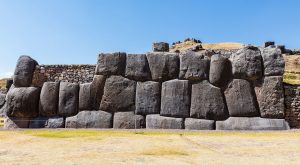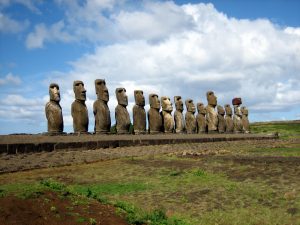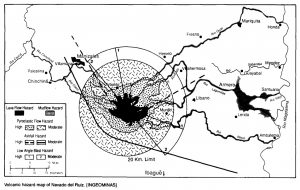As I have indicated in an earlier blog, I wrote an article about the conjectures Graham Hancock makes in his book entitled Magicians of the Gods for Skeptic magazine (Conjuring Up a Lost Civilization: An Analysis of the Claims Made by Graham Hancock in Magicians of the Gods). I also appeared on the Joe Rogan Experience (JRE) as a guest of Michael Shermer to debate Graham Hancock and Randal Carlson. I never realized just how popular Hancock was and is until I read some of the downright hostile and vitriolic comments directed at Michael Shermer and me after we were on the JRE. I posted some of them on my Facebook page to amuse my friends and family. I should point out that although I don’t like being the brunt of hate speech, I firmly believe in their freedom of expression. Having said this, I did take seriously a comment made by Bill Napier, an astronomer who is a honorary professor of astrobiology in the Center for Astrobiology at Cardiff University. Napier has published several articles on the Younger Dryas Impact Hypothesis (YDIH). He submitted a letter to a website called the Cosmic Tusk which is owned by George Howard. Howard is one of the co-authors on the Firestone et al.[1] paper – the first article which postulated a comet impact about 13,000 years ago. It would appear that I ruffled both Howard and Napier’s feathers in questioning the scientific validity of the comet strike on the JRE. The article is entitled Open Letter: Napier on Defant and the Joe Rogan Podcast. Of course, Hancock, who has an article presented on the site, wasted no time in referencing the comments by Howard and the letter by Napier to support the validity of his position.
Let me repeat what I stated in my Skeptic article. Although I remain open minded about the possibility of a comet strike 12,900 years ago, I am extremely skeptical that it had an impact on the Clovis culture or the megafauna of North and South America. I also applaud the scientists who are proponents of the comet strike for their handling of the YDIH by publishing results in refereed scientific journals. Because Hancock has latched onto the hypothesis to explain supposedly how Atlantis was destroyed, I had to get into the details of the scientific debate on the YDIH. My position is that there is still a great amount of controversy in the literature surrounding the hypothesis, and I don’t wish to become an advocate for either side until the debate has played itself out in the literature. This is how science works. But there is little doubt in my mind and apparently in Napier’s mind based on his comments, that the comet strike (if there was one) had nothing to do with lost civilizations.
The most important point I want to address is Napier’s claim that I incorrectly described how comets break up when I was on the JRE. He states: “Marc Defant told us that “the comet guys are getting hit pretty hard,” but alas, he backed this up with a blatantly wrong description of comet evolution.” I did not specifically talk about comet evolution nor did I try to show “the comet guys” were wrong. I simply suggested that there were problems with some of the postulates including how comets break up. I stated: “It [Comet Shoemaker-Levy 9] broke up because of the gravitation of Jupiter. You would not expect them [comets] to break up entering into the [earth] atmosphere… and then separate.” In other words, it is difficult to explain with physics how a comet entering the atmosphere would disperse after it breaks up through a proposed airburst so that megafauna and the Clovis culture would be affected over two continents. Napier claims that “Marc and Michael seem to have been misled by unrefereed nonsense from a few people with no expertise or track record in cometary dynamics, and ignorant of its extensive, long-running literature.” Perhaps Napier misunderstood what I was saying. I carefully read the YDIH literature prior to the paper I wrote for Skeptic and my appearance on the JRE. The comments above were specifically taken directly from a paper published in a refereed scientific journal (J. of Quaternary Science) by Holliday et al.[2] – some of the scientific opponents of Napier and Howard. I quote from the Holliday paper: “No physical mechanism is known to produce an airburst [an exploding comet] that would affect the entire continent… They [referencing Wittke et al.[3] who propose a model for the breakup of a comet] state that the impactor probably broke apart in solar orbit before encountering Earth, as do most comets ‘including Comet Shoemaker-Levy 9’. However SL9 was orbiting Jupiter, not the sun, when it broke apart, and, moreover, most comets do not break up in solar orbit. The reason that all the fragments of SL9 collided with Jupiter is because they were in orbit around Jupiter. The processes that led to the multiple impacts on Jupiter do not apply to comets in solar orbit or for approaches to Earth… Moreover, a spontaneous breakup in solar orbit, such as Comet 73P/Schwassmann-Wachmann would have had to be exquisitely timed in order for an expanding cloud of debris to strike the Earth. Dispersed impacts of multiple fragments would be at least 1000 times less frequent (probable) than the impact of a single nucleus, which is already an extraordinarily rare impact”.
 Dark areas on Jupiter where Comet Shoemaker-Levy 9 hit.
Dark areas on Jupiter where Comet Shoemaker-Levy 9 hit.
It is true that I am not an expert on comet dynamics, but I know how to read and understand the scientific literature. I am going to presume that Napier misunderstood my position and that although he may disagree with Holliday et al., my statements were based on their refereed scientific article. In fact, Holliday et al. challenge Napier et al.[4] in their paper for suggesting that “passage through a cluster of fragments from a broken comet would probably ‘yield several impactors with energies up to 5,000 megatons, fully adequate for surface melting’… However, cometary impactors of this energy would be about 1 km in diameter and there is no physical mechanism to prevent them from striking the ground and forming 10-km diameter craters.” Of course, I also addressed the lack of craters at the YD boundary when I was on the JRE. I would only add that Napier might be better served by addressing Holliday et al. and other scientists directly involved with the YDIH in the scientific literature as opposed to publishing letters in the Cosmic Tusk – a site that clearly appeals to a nonscientific audience interested in the speculative and supernatural.
It does not appear that Napier had a hidden agenda in criticizing me, but I wish I could say the same for Howard. His comments are characteristic of some of the vitriol I received from the general public for simply disagreeing with Hancock – not the kind of professionalism one might expect from a person who lauds himself as a scientist (and skeptic of all things). I honestly think it is unbefitting of me to address ad hominem and sarcastic attacks like “Defant showed zero humility and spoke of comets with the familiarity of a volcanologist.” However, I do think it is instructive for my students to see that “scientists” are human and sometimes resort to personal attacks rather than addressing the details of the science. Basically Howard is engaging in silly turf wars where credentials and opinion of behavior become more important than the scientific rigor of what is being said. As far as I can tell, Howard has a BA degree in political science from the University of North Carolina so I am not sure he should be throwing rocks from his proverbial glass house. One wonders how he can make the claim that “He may or may not know it, but Defant’s received wisdom… is 1960’s [sic] grade school comet science [sic]” (I refer the reader to my discussion above in refutation of the few actual scientific criticisms Howard makes – basically a repeat of what Napier says).
Walter Alvarez, a structural geologist, and his father Luis Alvarez, a physicist (passed), were responsible for discovering the impact of a 10 km meteorite that hit earth 66 million years ago and led to the eventual extinction of the dinosaurs. I wonder if Howard dismisses their discovery because they were not astronomers? Two geochemists also participated in the discovery which is my specialty (I am a professor of geochemistry and my PhD is specifically in that field) – I apply geochemistry to volcanic rocks to understand processes within the earth. Had Howard taken the time to research my background before he made his attacks, he would have found my book Voyage of Discovery: From the Big Bang to the Ice Age (about the history of the universe, earth and life), my general science course entitled Origins, my video lectures particularly on astronomy (including comets), and my Tedx talk on Why We are Alone in the Galaxy as some evidence that I might know a bit more about the subject than “grade school comet science”. I note that Howard’s contention in the Firestone et al.[5] paper that the formation of the Carolina Bays (his claimed area of research) by comet strikes 12,900 years ago has been thoroughly debunked based on new dating[6]. It would be unprofessional on my part to attribute his incorrect interpretation of the Carolina Bays to a lack of understanding because he is a political scientist, so I won’t.
I find it ironic that Howard claims to be a skeptic and yet publishes (and links) to a paper by Hancock who, among other things, touts his lost civilization: Hancock on the Younger Dryas Impact Hypothesis since 2007. Let’s not forget that Hancock claims that we are in mortal danger until 2040 from another comet strike based on interpretations he makes from so-called asterisms at Glöbekli Tepe. Apparently Hancock, a self-described reporter with an undergraduate degree in sociology (see the JRE starting at about 2:12:47 where we are discussing the Mayan calendar – he claims to be just a reporter) has more bonafides than a “volcanologist” in Howard’s mind. Hancock’s credentials notwithstanding, I hardly think Howard can consider himself a skeptic when he allows someone to tout fantastic unsupported stories about lost civilizations on his website. I presume the Cosmic Tusk is more interested in giving a voice to people who agree with Howard, regardless of their far-fetched notions about the supernatual, than scientists interested in physical reality.
[1] Firestone, R. B., et al., 2007. Evidence for an extraterrestrial impact 12,900 years ago that contributed to the megafaunal extinctions and the Younger Dryas cooling. Proc. Natl. Acad. Sci., v. 104, 16016-16021.
[2] Holliday, V. T., et la., 2014. The Younger Dryas impact hypothesis: a cosmic catastrophe. J. Quaternary Sci., v. 29, 515-530.
[3] Wittke, J. H., et al., 2013, Evidence for deposition of 10 million tonnes of impact spherules across four continents 12,800 years ago: Proc. Natl. Acad. Sci., v. 110, p. E2088-E2097
[4] Napier, W.A., et al., 2013, Reply to Boslough et al.: Decades of comet research counter their claims: Proc. Natl. Acad. Sci., v. 110, p. E4171.
[5] Firestone et al., 2007, op cit.
[6] For example, Meltzer, D. J. et al., 2014, Chronological evidence fails to support claims for an isochronus widespread layer of cosmic impact indicators dated to 12,800 years ago: Proc. Natl. Acad. Sci., v. 111, p. E2162-E2171.

 The superb construction at Sacsayhuaman in Peru.
The superb construction at Sacsayhuaman in Peru. Moai of Easter Island
Moai of Easter Island
